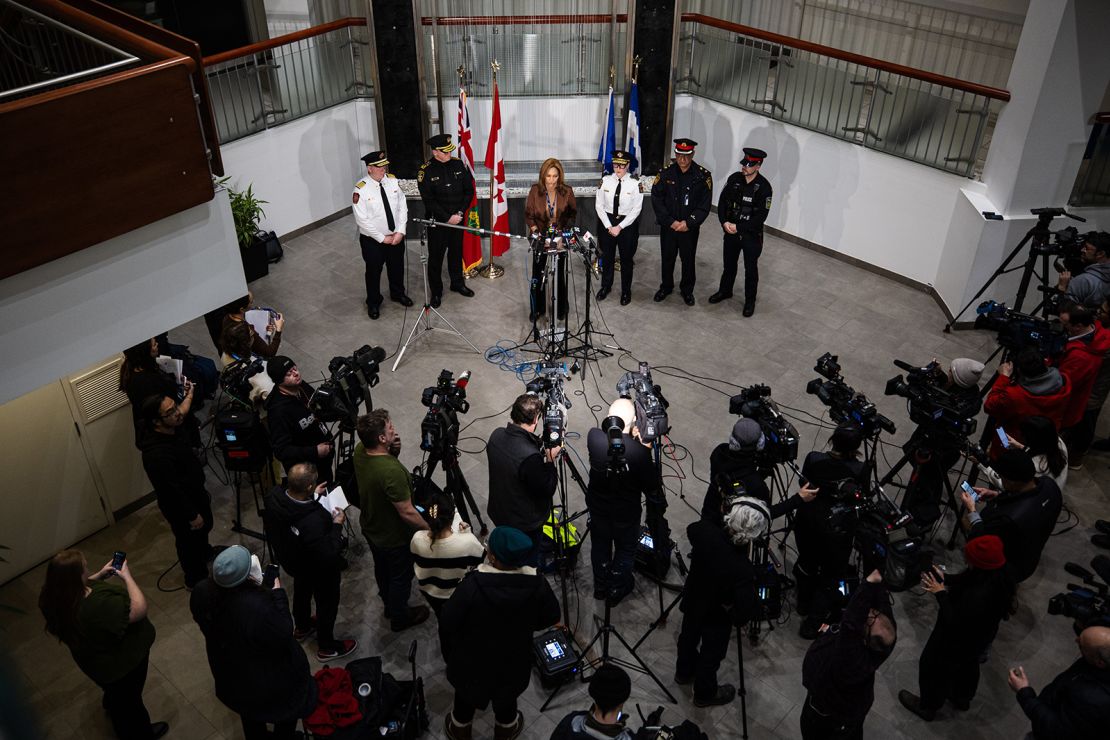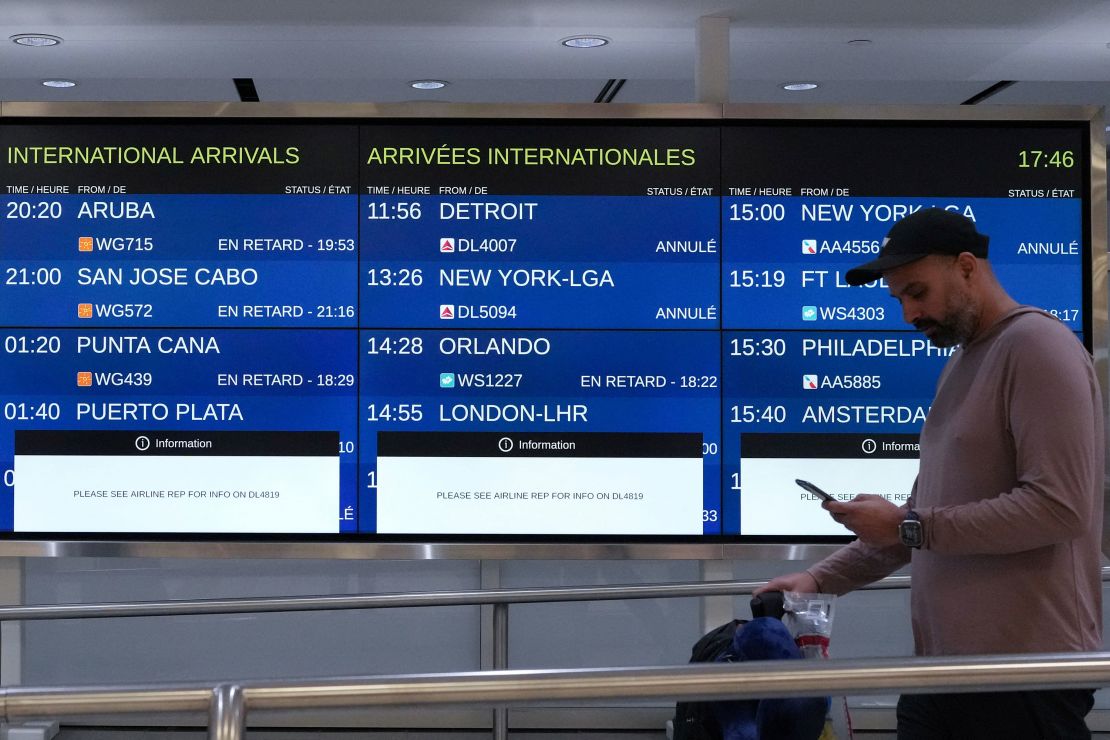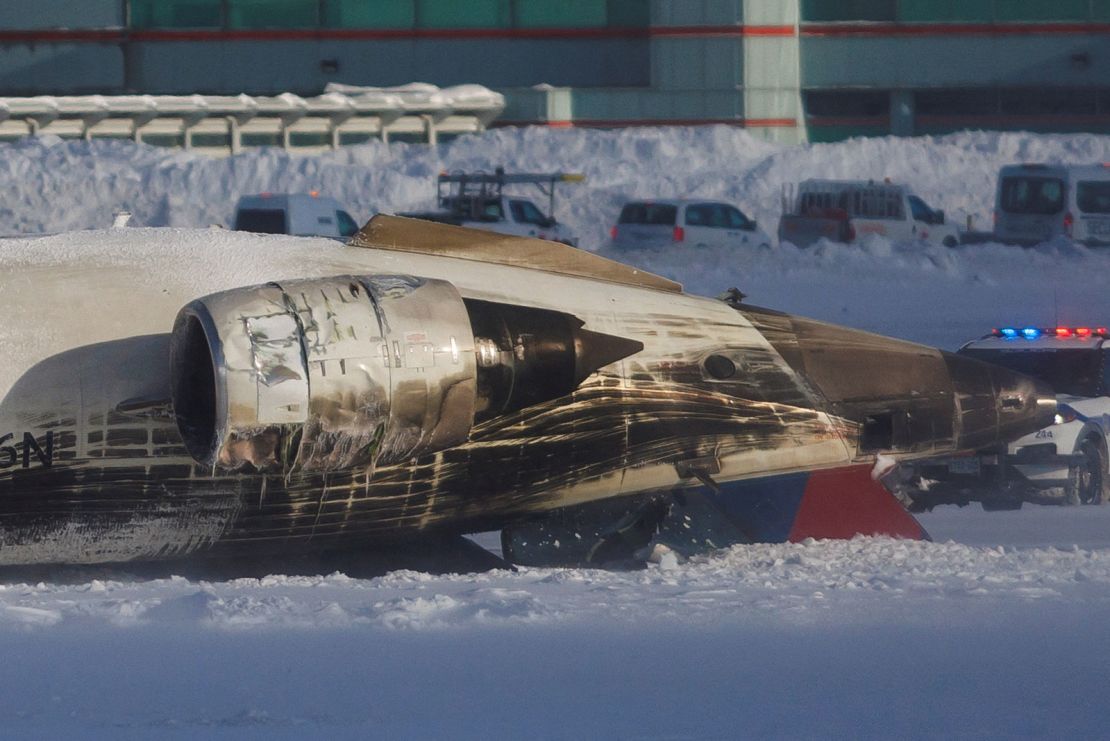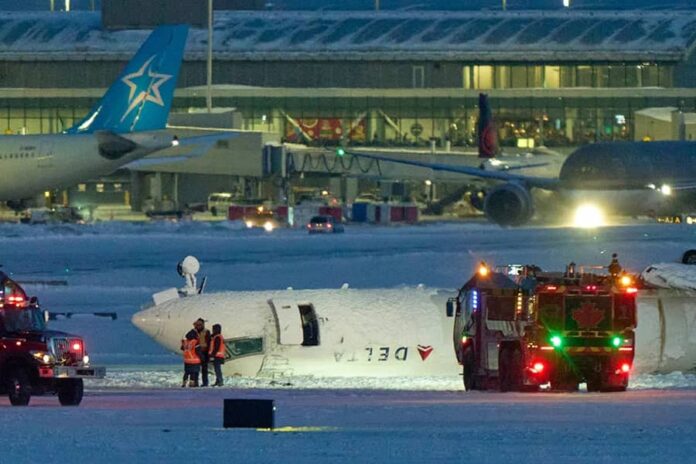A Delta Air Lines flight from Minneapolis crashed and turned upside down on the runway at Toronto Pearson International Airport while attempting to land on Monday, the latest in a string of passenger plane crashes since December.
All 80 people on board the CRJ900 twin-jet aircraft survived, but 18 people were injured, Delta said.
Monday’s crash follows a deadly few months for air travel. Earlier this month, 10 people were killed when a regional airline plane crashed in Alaska. Less than three weeks ago, 67 people were killed when an American Airlines plane collided middair with a US Army Black Hawk helicopter near Washington DC – a disaster preceded by deadly Jeju Air and Azerbaijan Airlines crashes in December.
Here’s what we know:

All 80 passengers and crew survived
Delta Flight 4819, operated by Delta subsidiary Endeavor Air, departed from Minneapolis/St. Paul International Airport and crashed at the Toronto airport around 2:15 p.m. ET Monday, Delta said in a statement.
No fatalities were reported as of Monday evening, but both Delta Air Lines and Toronto Airport Fire Chief Todd Aitken said 18 people were injured.
A child was among the injured but is in good condition, the Hospital for Sick Children in Toronto said.
Some of the passengers who were hospitalized have been released, Delta said.
“The hearts of the entire global Delta family are with those affected by today’s incident at Toronto-Pearson International Airport,” said Delta CEO Ed Bastian. “I want to express my thanks to the many Delta and Endeavor team members and the first responders on site.”
Deborah Flint, the president and CEO of Toronto Pearson International Airport, also credited the “textbook response” of first responders for helping prevent loss of life.

Hard landing left passengers ‘upside down hanging like bats’
Pete Koukov, a passenger on the Delta plane, said he “didn’t know anything was the matter” until they hit the ground — which he described as a hard landing.
“We hit the ground, and we were sideways, and then we were upside down hanging like bats,” Koukov told CNN’s Brianna Keilar.
Images showed the plane flipped upside down with its wheels in the air on a snowy runway. The pilot of a medical helicopter in the area described the aircraft as “upside down and burning.”
Koukov said he was able to unbuckle his seat belt, push himself to the ground and then walk out of the plane, but some others needed help getting down from their seats.
“Just feeling lucky and happy I got to give the person I didn’t know sitting next to me a big hug, that we were OK, and see my friends who are here to pick me up from the airport and give them a big hug,” he said.
John Nelson, another passenger aboard the flight, said “it’s amazing that we’re still here.”
“When we hit, it was just a super hard — it hit the ground, and the plane went sideways,” Nelson said, adding that he saw “a big fireball” out of the left side of the plane.
He described a scene of “mass chaos” as passengers tried to unbuckle themselves and exit the plane.
“We tried to get out of there as quickly as possible,” Nelson said. “Even now I smell like jet fuel.”
Peter Goelz, a CNN aviation analyst and former National Transportation Safety Board managing director, said the Bombardier CRJ900 – the aircraft that crashed – was built to take a hard hit upon landing, enabling the quick evacuation of passengers and crew.

Canadian and US authorities are investigating the cause of the crash
The crash occurred on a gusty day in Canada’s largest city following heavy snowfall – but the runway was dry and there were no crosswind conditions, Aitken, the airport fire chief said.
Winds of 32 mph with gusts of 40 mph were blowing at Pearson Monday, blowing snow into the air, with a visibility of five miles.
Two runways at Toronto Pearson will remain closed “for the rest of tonight and into the next several days” while an investigation takes place, the airport’s CEO said.
The Transportation Safety Board of Canada is leading the investigation, with help from the National Transportation Safety Board in the US.
US Transportation Secretary Sean Duffy said on X that Federal Aviation Administration investigators are on their way to Toronto, and he has been in touch with his counterpart in Canada.
Members of Endeavor Air’s leadership team, including CEO Jim Graham, are also on their way to Toronto to cooperate with investigators, Delta said in a statement.
By Lex Harvey, CNN

